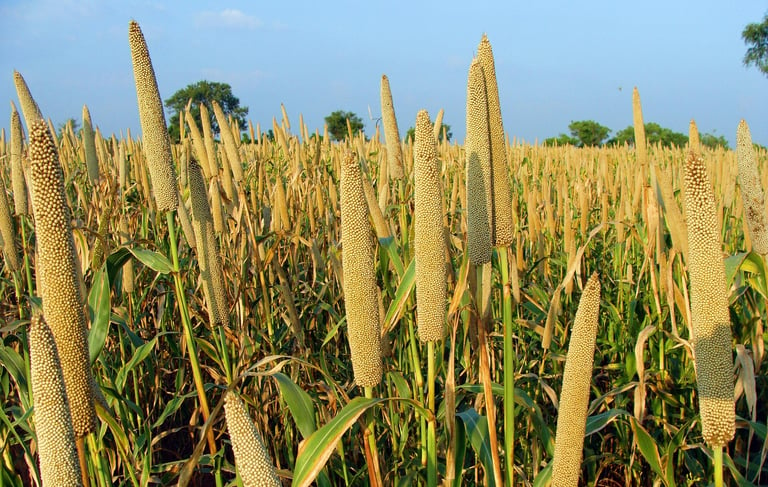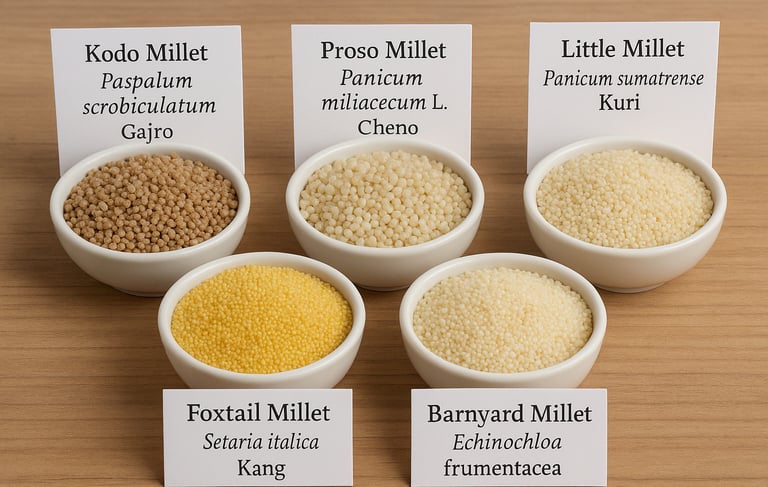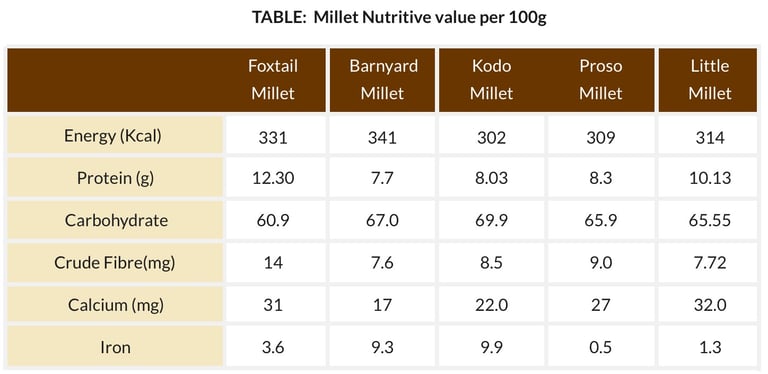“Rediscover Millets – Nature’s Super Grains”

Natural Products
Pearl Millet (bajri)
Pearl millet (Pennisetum glaucum) is the most widely cultivated millet, especially important in Africa and Asia for its drought and heat resistance. It thrives even in poor soils and has high yield potential under stress. Nutritionally, it’s rich in fiber, calcium, and phosphorus, aiding in weight loss, gallstone prevention, and bone health. In Gujarat, it is grown in kharif, semi-rabi, and summer seasons. The Main Millet Research Station in Jamnagar leads pearl millet research in the state, focusing on cultivar development, agronomy, plant protection, and seed technology.


Energy (Kcal)
Protein
Carbohydrate
Crude Fibre
Iron
Calcium
361
11.6 g
65.5 g
1.2 g
42 mg
8.0 mg
TABLE: Pearl Millet Nutrient per 100g
SORGHUM
Sorghum (Sorghum bicolor L.), known as the “King of Millets,” is a vital staple crop in semi-arid regions. It’s rich in carbohydrates and slow-digesting starch, with natural antioxidants that help combat oxidative stress. Traditionally, farmers used low-yielding, pest-susceptible local varieties, but due to low returns and grain mold issues in high rainfall areas like South Gujarat, improved varieties like GJ 38, GJ 42, and Gujarat Navsari Jowar-1 are now being adopted.
In North Gujarat, new drought-tolerant and pest-resistant varieties such as GJ 39, GFS 5, and CSV 21F have replaced old types like Malvan. In **Kutchh
Energy (Kcal)
Protein
Carbohydrate
Crude Fibre
Iron
Calcium
349
10.4 g
72.6 g
1.6 g
42 mg
4.1 mg
TABLE: Sorghum Nutrient per 100g


SMALL MILLETS
The Hill Millet Research Station in Dahod is the only AAU center focused on minor millets like finger, kodo, proso, little, foxtail, and barnyard millet. Located in a tribal region where farmers can’t afford high-input crops, it supports food security through low-cost, nutrient-tolerant millets. Recognized by ICAR and the Gujarat government, the center has developed several high-yielding millet varieties to promote sustainable farming and livelihoods.


LITTLE MILLETS
Little Millet (Panicum miliare) is a traditional crop grown across India and closely related to proso millet, though it has much smaller seeds. Its low carbohydrate content, slow digestibility, and low water-soluble gum make it beneficial for glucose metabolism, as it releases sugar gradually into the bloodstream, helping to control blood sugar levels effectively.

